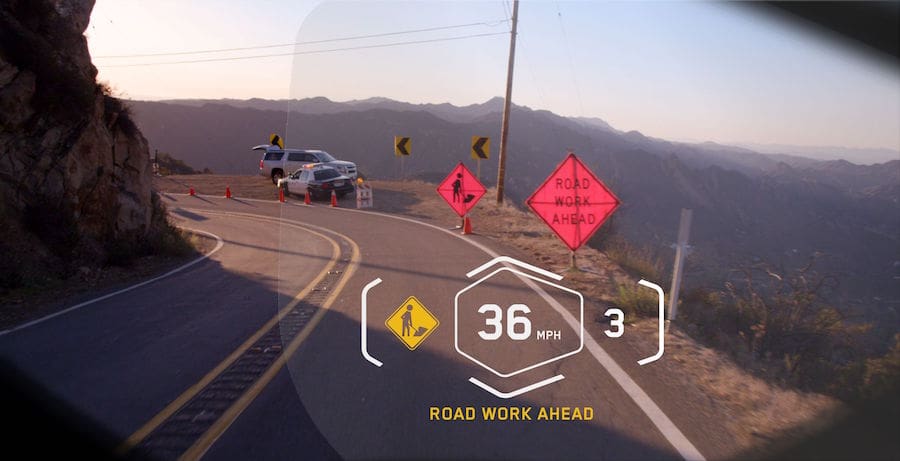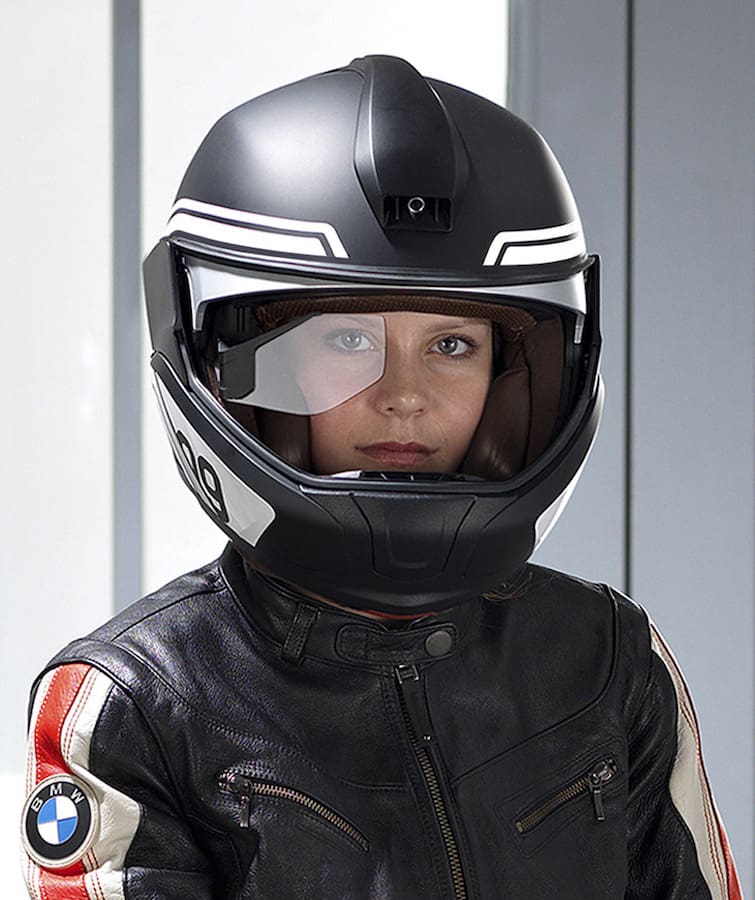Vital information inside your visor? That’s what BMW is offering with its new helmet
BMW has taken the wraps off a prototype helmet complete with a head-up display (HUD) that it plans to develop into a production offering within the next few years.
The firm isn’t new to HUD technology, having offered it as an option on cars since 2003, but the challenge of shrinking it down to a display that’s both usable and useful inside the confines of a motorcycle helmet means there’s still a lot of development ahead (boom tish).
While others have tried to create HUD helmets – notably crowd-funded start-up Skully, which has been trying to bring its system to the market since 2013 – at the moment the closest that’s been achieved in the real world has been the use of Google Glass under a conventional lid by the handful of motorcyclists who were prepared to adopt the firm’s unloved wearable computer technology.
BMW’s new helmet, unveiled at the Consumer Electronics Show in Las Vegas this month, is intended to present riders with only the most important information. Simulated images of the system’s display show little more than speed and gear position along with alerts regarding real-time hazards on the road. Warnings about the bike itself are also displayed, something that could prove particularly useful for urgent issues like low tyre pressures or oil pressure problems.
BMW’s helmet also incorporates cameras. The front camera would work much like a GoPro, recording the ride to be played back later on. The firm also envisions a rear-facing one that would allow the HUD to act as a digital rear-view mirror.
The helmet and HUD would be controlled wirelessly via buttons on the left-hand bar, and would feature two replaceable batteries giving around five hours of use before they needed to be swapped.

Where’s all this HUD tech coming from?
Silicon Valley firm DigiLens, is providing the technology for BMW’s new helmet. The company, which specialises in this field, says that the helmet uses a new ‘waveguide’ display technology that it expects to have in production in 2017. The image on the screen has a long-range focus point which means it appears sharp even when your eyes are focussed on the road ahead.
What else can the HUD show?
DigiLens says its technology can be used to display GPS mapping, traffic warnings, phone communications detail, engine management information, fuel levels and even mundane stuff like indicator lights. Beyond that, it reckons the display could show the views from additional cameras and suggests that in future a radar system could allow it to overlay an outline of the road ahead and augmented reality features, perhaps helping with riding at night or in fog. The firm says voice control will allow the rider to change settings and increase or decrease the amount of information on the display. It also plans to offer customised versions of the technology, for instance a police version adding information about vehicles and motorists they’re following. And there’s scope for creating downloadable apps, smartphone-style, to alter the behaviour and capabilities of the HUD.
How will it get real-time hazard alerts?
BMW envisions the HUD being combined with the vehicle-to-vehicle (V2V) technology that it’s already working on alongside other manufacturers including Honda to bring real-time warnings of approaching hazards. V2V would allow cars and bikes to communicate directly with one another, rather than via the internet, effectively passing messages along from one vehicle to the next. For example, if a car or bike uses its ABS or traction control it would be able to directly alert nearby vehicles that there’s a slippery surface, with that message being passed on to other approaching vehicles in a sort of electronic game of Chinese whispers.
What will it all cost, and do I need a BMW?
While BMW has clearly thrown its weight behind the idea, the technology involved in the HUD comes mainly from DigiLens, which plans to offer the technology to other companies as well once it’s production-ready in 2017. It might well become possible to buy HUD-equipped helmets from a range of brands, all using the same, compatible technology. Because of the computer part and the use of built-in cameras, it’s unlikely the HUD could be swapped between helmets, but given the rate of improvement in electronics, buyers will probably want new HUD kit by the time it comes to replace their lid. In terms of price, DigiLens reckons an HUD helmet will cost around 40 per cent more than a normal one, although that estimate is likely to be based on the price of a high-end helmet in the first place.
